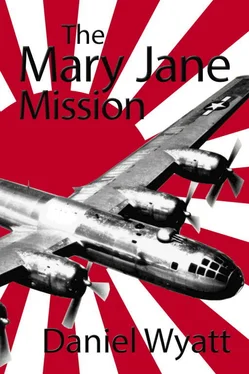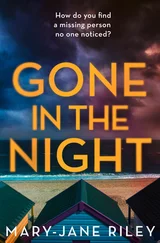“Sir,” asked another girl, “were there any more bombs in the atomic arsenal? What if the Japanese had refused to surrender after Nagasaki? Then what?”
Cameron smiled broadly. “Of course, we didn’t let the Japanese government know, but we wouldn’t have had another bomb ready for many more months. It was a good thing for us and them that they surrendered a few days following Nagasaki, otherwise we might have had to invade after all in the fall or wait till the atomic scientists had the next bomb ready.”
The same girl then asked, “What do you say, sir, to the people who think we should apologize to the Japanese for dropping the bomb on them?”
Cameron wasn’t smiling now. He waited several seconds before he answered. “I don’t remember the Japanese ever apologizing for Pearl Harbor.”
GUAM
Captain George MacDonald studied a large map of the Mariana Islands that his adjutant had placed many days before on the wall to the left of his desk. For the past week, the captain had been poking colored pins into certain spots on the map, an area north of Guam. Today, he punched two more pins into the paper.
The intercom buzzed.
“Yes,” the CO answered quickly.
“Sir, it’s Commodore Prentice. The connection isn’t the greatest.”
“Put him on.”
“Aye, aye, sir. Line two.”
MacDonald lifted his desk receiver. A moment later, a voice crackled, “George, can you hear me?”
“I can, Will. Bad reception.”
“Tell me about it.” Commodore William Prentice was the commanding officer of the carrier USS Midway , at that moment on naval exercises approximately 400 miles to the north of Guam. Although Prentice had recently risen one step in rank above MacDonald, the two were friends and had been since their early navy days in the States. “What’s up, George?”
“Just thought I’d let you know that the two F-18 pilots will be coming up to see you in the next couple of hours.”
“Affirmative. I’m too busy to worry about what appears to be some innocent target, anyway. I’m like Pontius Pilate. I wash my hands of the incident.”
MacDonald grunted. He had a feeling they weren’t so innocent. “Thanks for tracking down and recording the signals for me.”
“I owe you one. Besides, we’re in this together. At least as far as I can go with it. I’ll make your boys feel right at home. Who are they, by the way? Anyone I know?”
“Lieutenants Runsted and Shilling.”
“Shilling, huh? The Top Gun graduate.” Prentice sounded impressed. “I’ll be glad to take him back. I’ll give them both the best treatment. And together we’ll get to the bottom of this. Keep in touch.”
“You bet. Thanks, Will. Let’s keep this to ourselves.”
“My lips are sealed.”
“Good hunting.”
MacDonald hung onto the receiver for a long time after the conversation, then finally laid it in place. Good ol’ Will had come through. Thanks to him, Midway ’s radar had been tracking the same targets once they were outside Agana’s scan of 200 miles. MacDonald wondered what he would have done had Midway not been on naval exercises in the area. And what if he hadn’t known Prentice? MacDonald felt a driving need to find the source of these strange signals that were now moving away from his base and were still suddenly disappearing without a trace before the navy fighters could get an ID or a visual.
A knock at the door made the captain look up. “Come in.”
Jack Runsted and Les Shilling walked up, draped in their flying gear. Both gave the CO a firm salute.
“At ease. Come on over to the map, gentlemen. I want you to see something.”
At the wall map, the pilots to either side of him, the CO stroked his chin and studied the map once again. Then he shut the venetian blinds to his right, to keep the setting sun out.
“On the map are six pins,” he began, “placed on the exact positions that the mysterious targets were first recorded on radar. As you can see, there is a definite pattern unfolding. Two close together, a space, two not as close, a space, and two even further apart. They all form a perfect line.” The CO’s finger slid across the positions. “The northern point is almost 400 miles from Guam. The very first sighting occurred at oh-one-hundred July twenty-fifth, the second at oh-one-ten three days later, and the third at oh-one-fifteen two days after that. And so on. Six sightings at five or ten-minute intervals, but either two or three days apart.”
MacDonald leaned against his desk and rubbed his neck. “Six sightings,” he continued, “and we haven’t made a visual. We have the hottest, most sophisticated fighters anywhere in the world with the most advanced avionics, and we can’t even make a visual of an aircraft that’s flying at a thousand or so feet and 200 knots!”
“Sir?” Les asked. “What about the possibility of flying saucers?”
MacDonald folded his arms and looked into the eyes of the two lieutenants. “It’s something we’ll have to keep in mind. Anyway, off the island of Agrihan is the carrier USS Midway . I want you two to take off at—” he checked his watch “–twenty-two hundred hours, and go straight for Midway and stay there until further notice. I want you both on alert, ready to be launched on a moment’s notice. You each have a photo-recon pod aboard. Of course, you know what that means. I want pictures. No other action taken. The lab on Midway will do the developing for you. Then I want you right back here. This is just between us three. I want a lid on this. Got it?”
“Aye, aye, sir,” the two pilots replied automatically.
“This is starting to piss me off!” MacDonald said. “I want to know what’s out there. Dismissed.”
Once the pilots left, MacDonald slumped into his chair. He was trying to sort out the events in his mind. The USAF claimed they were not sending up any of their aircraft in the early morning hours when the sightings occurred. In addition, Fifi , the B-29, had not been flying for three days, and the way things were going it might not even be ready for its Tinian reunion flight, now only five days away. According to the pattern, the next sighting was due at approximately oh-two-hundred tomorrow or the next day and should be off the island of Agrihan. MacDonald shook his head.
The whole thing was just too nutty. What the hell was out there?
* * *
USS MIDWAY
On the moonlit deck, Les and the plane captain checked the F-18 Hornet over. No leaks, no wrenches left in the intakes, none of the little things that could kill a pilot. No cracks on the tires or wings. The two satisfied, Les confidently climbed the ladder and slid into the cockpit.
He ran through the checklist, a handwritten set of notes on a piece of cardboard that he kept on his knees. He pressed the correct buttons for the navigation system, the radio, and on down the line… Then the deck crew gave him the all-clear. He fired up the engines, left to right. With the engines at idle, he waited for the crew to clear the parking chains and chocks. A young sailor in yellow — A Yellow Shirt — directed him by flashlight to the launch spot on Number One catapult. The Blue Shirts, complete with blue wands, scanned the F-18s control surfaces.
On the catapult, the hook-up man attached the launching bar on the nose gear into the shuttle. Then a Green Shirt took over and checked the holdback bar and its attached bolt, which would let loose only once the F-18 left the deck.
The on-deck speakers aboard USS Midway blared to life. “LAUNCH ZULU TWO-FOUR-THREE AND ZULU TWO-FOUR-FOUR! LAUNCH ZULU TWO-FOUR-THREE AND ZULU TWO-FOUR-FOUR!”
Читать дальше












